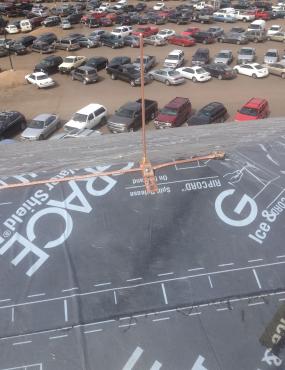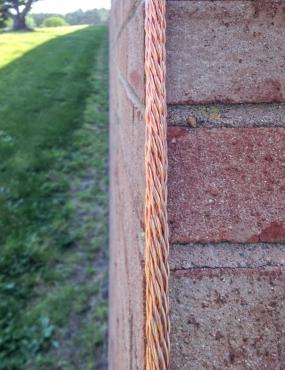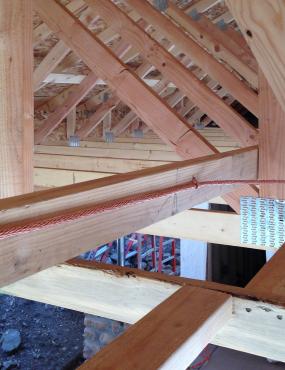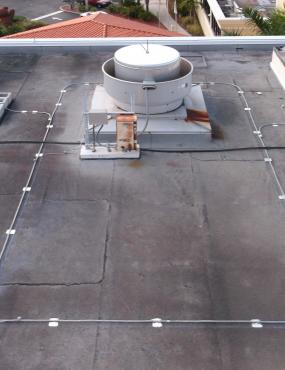Lightning Protection Conductor and Rods
In addition to interconnecting the rooftop components of the lightning protection system, conductors provide multiple paths for lightning to travel from the roof to the lightning protection down conductors.
The conductors are, most often, heavy-duty multi-strand cables, either braided or wound from aluminum, copper, or tinned copper wires. Solid metal rods and flat metal strip are also conductor options for certain applications. The multi-strand cable is generally easier to work with and can effectively be installed inconspicuously.
In many situations, structural steel, metal railings, and other metal fabrications can be used in lieu of cables. Provided the metal is at least 3/16 inch thick and can be made electrically continuous. (See article in Modern Steel Construction for more information.)
In order to carry the lightning charge effectively, the lightning conductor and rods shall be coursed as directly as possible from the roof to the ground, must not make upward climbs, and should not have sharp bends.
Conductors are frequently concealed inside building cavities or framing. If it is necessary, conductors may be installed in exterior locations so the cables can be concealed behind downspouts or other parts of a building, aligned with architectural features, or painted to minimize aesthetic impact.
Consideration should be given to the products that the lightning protection conductors come in contact with to ensure that materials are compatible. For example, if the roof or roof copings are aluminum or steel, the lightning protection components will need to be aluminum to avoid destructive galvanic reactions between the lightning protection system and the building material. Other factors that come into play when choosing materials can include aesthetics and stain resistance.
Lightning conductors can be installed directly in contact with wood and other combustible building materials. That’s because conductors are sized to minimize electrical resistance; since the current is, literally, “lightning fast”, there is no time for it to generate enough heat to cause concern.

The copper conductor cable will be hidden once roofing is installed.

A copper conductor cable visually blends into the reddish brick wall. Aligning it with the building's architectural edges further reduces its visual impact.

The structural steel column can be used as a down conductor. A short length of multi-strand cable connects the top of the column to a through-roof penetration device that is attached to additional conductors and air terminals on the building's roof.

Lightning protection conductors can be installed in direct contact with wood and other flammable materials.

Lightning protection conductors can be installed in direct contact with wood and other flammable materials.

Lightning protection cables are available in a variety of materials and sizes to meet the full range of lightning protection conditions.

Conductor cables on the rooftop and parapet connect to air terminals and rooftop mechanical and communication equipment.
Our Partner:

visit www.sls-us.com to learn about their suite of lightning solutions for special applications

